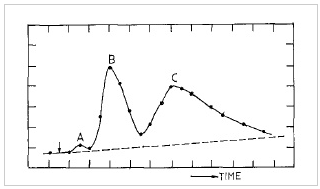
Home News Industry-news The charm of gas-solid chromatography…
—Gas solid chromatography emerged earlier than gas liquid chromatography
Most people know that in 1952, Martin and Synge won the Nobel Prize in Chemistry for their invention of gas chromatography, however, the real first gas-solid chromatograph was developed by Erika Cremer and her students at the University of Innsbruck in Austria. During the Second World War from 1944 to 1945, Cremer and her students designed and developed the first gas-solid chromatograph, during this period, there is a fascinating story.
Erika Cremer (1900-1996) studied physical chemistry, so she has a strong research background in adsorption/desorption. In 1940, She participated in the hydrogenation research of acetylene at the University of Innsbruck in Austria, one of the problems she encountered was determining the content of acetylene and ethylene in the mixture. At the beginning, her experiment was measured by selective adsorption methods, however, she found that the difference in adsorption heat between these two compounds was not sufficient to separate them by using classical adsorption methods. Meanwhile she was very familiar with Hesse's textbook—liquid chromatography (published in 1943),this book let know that she could consider to try adsorption chromatography, using gas as the mobile phase and utilizing the difference in adsorption to separate mixtures.
After research and reflection, Cremer summarized her new ideas and wrote a short article. She also submitted the article to Naturwissenschaft magazine for publication. The magazine received her article on November 29, 1944 and accepted it in February 1945. After receiving the publisher's sample for the article, Cremer immediately completed the proofreading and sent it back. But when the publishing house was about to print it in the form of a special issue, the factory was bombed out in the air raid, so this article was buried in ruins and has never been published until 1976, 31 years later, when it was published as a historical document.
After the end of World War II, most of the laboratories at the University of Innsbruck in Austria were destroyed. But Fritz Prior, Cremer’s one new graduate student, can conduct experiments at his former high school (He used to be a teacher in this high school). Regarding his doctoral thesis, Cremer decided to choose the ideas about gas solid chromatography instruments and methods in that paper which had been destroyed in an air raid. Fortunately, the thermal conductivity pool she originally designed and made herself is still here, the gas chromatograph they assembled has the main components of gas contemporary chromatographs, hydrogen gas is used as a carrier gas, with a carrier gas flow regulator, an injection system, a chromatographic column for separation, and a thermal conductivity detector. This scheme is still on display in the Bonn branch of the German Museum.
In the spring of 1947, Prior's work was completed and positive results were obtained. This instrument can quantitatively separate air, acetylene, and ethylene. The following figure is a separation diagram of this paper.

Figure one: Prior, the chromatograph of separating acetylene and ethylene
chromatographic column:U-tube,Diameter:1cm,Filling silicone: 20 cm, Column temperature: 25 ℃.
A= air, B= ethylene, C= acetylene
Name: Jimy Ji
Mobile:+86 18915768767
Tel:+86 13646226232
Whatsapp:8615370757815
Email:sale@tsingcarbo.com
Add:No.5, Wujing Road, Economic and Technological Development Zone, Kunshan, Suzhou, China